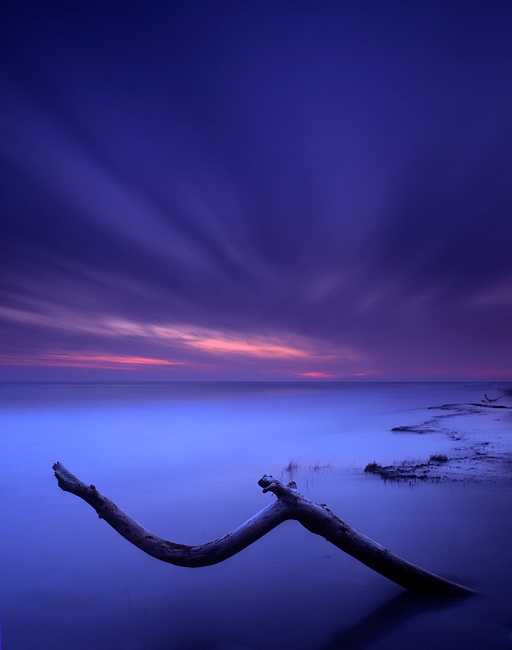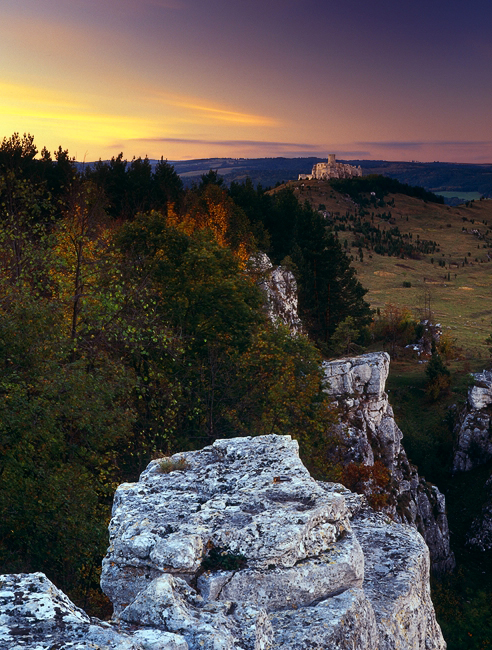From Dusk till Dawn
What do you think a good light is? There are many forms of light but generally a “golden hour” is widely considered as the very best time to take photos. No matter how cliche-ish this sounds. Whoever (landscape photographer or not) gets to any attractive place on the Earth during the “golden hour”, which is something totally different from a common daylight must always be amazed. You can’t escape, you won’t deny. Unless your feelings are as dull as a rock on the bottom of a lake. Lighting conditions unusual for our eyes can change any subject matter to previously unrecognized extend, what can be verified by every photographer searching for this magic light. All sceneries are gaining some extra hues and the real feel of three-dimensional space thanks to a long trip the sun needs to take through the atmosphere and low angle it is illuminating the ground. But let’s do an extra step or two. Watch your favorite spot after dusk or before dawn, way before it. And shoot it!

Few years back, I paid a brief visit to Tuscany, just few months after switching from digital to film. I felt attracted by the beauty of a cultured land that had a great chance of being combined with a nice sort of the spring lighting and haze. Tuscany, unfortunately, proved to be a landscape of long lenses - my fresh medium format system could not keep up with digital snipers who wore huge glasses to tackle handsome details of this neat land. Well, I actually could only call for rain to escape somewhere else. To the seashore, for example. :-)
My wishes came true and here I was walking on the sand of the beach in San Rossore natural park north of Livorno. The weather could have hardly been any worse - clouds with no structure all over the sky seemed good only for a deep sleep to dream about photographing. I decided to use the time testing how different filters (I was a fresh happy owner of the gold-and-blue one) affect the emulsion of my Velvia 50. In fact, with no presentable result.
Well after sunset and few minutes before the park was closing, a small pink spot appeared just above the horizon. Everything else has quickly grown dark. In an experimenting mood, I realized that I had never tried film in the darkness though I thought of it many times, always after having seen a good night shot obviously. Also, a lone brunch boxed in the high tide was asking ‘shoot me’ and so I did having been looked for by guards with flashlights who were trying to lock the park. In a matter of seconds, I set the tripod up and (gu)estimated the exposure time based on my last metering quite some time ago as my spot meter remained completely speechless. Don’t remember how long I had to expose but it was well above 5 and probably less than 10 minutes because I would not stand more of testing my nerves by the fellow-photographer who walkie-talkied many time as he was waiting by the car with guards instead of shooting. After all, I actually underexposed the image because of them that eventually proved to help it hugely.

Seeing the slide on my light table few days later could not be more fascinating. What had appeared sadly colorless in reality, was shining at me with delicious combination of violet and pink hues. What had looked like the heavy cloud formation was suddenly showing clear movement paths and definition. If it is so simple to create artistic images, I’m in!
Ever since, I barely skip any opportunity to expose in the times between dusk and dawn. This is when the quality of light goes through the fastest and sometimes really dramatic changes. And this is when I can hardly imagine (and wait to see) what exactly the emulsion of Fuji Velvia, eventually combined with various filters, would see and render. The Earth is in the shadow while lit by the diffused light reflected from the upper part of the atmosphere, which still receives a direct sunlight. Sounds like a perfect chance to take up the challenge related to exposures and colors and produce a study of a subject we love to photograph that might come out very different. The ambition may easily vary between just ‘trying to see what happens’ all the way to the creation of a true fine art masterpiece. Given the long exposure times required as well as the fact that a perfect set up either does not happen at all (mostly) or lasts few minutes only, you usually have one or two chances per session. In any case, it is always fun and rewarding learning experience at last.
Especially if you manage to take notes...
All members of Lightharmony have been in search for these magic moments for quite some time by now. I can hardly believe that we launched the project called “From Dusk Till Dawn” back in Spring of 2006 but this is really it. Ever since, we shot hundreds of no-light photographs having tried to capture and convey moods of diverse twilight sceneries we had been witnessing. About 150 images were presented for critics amongst ourselves. Everybody from the current club members participated. We have chosen 40 + 1 photographs from all 17 participants to showcase our efforts in the following presentation. Within about 5 minutes show, you now can see the stunning collection of photographs intentionally made after dusk and before dawn. So turn off any lamps nearby and feel the light!
